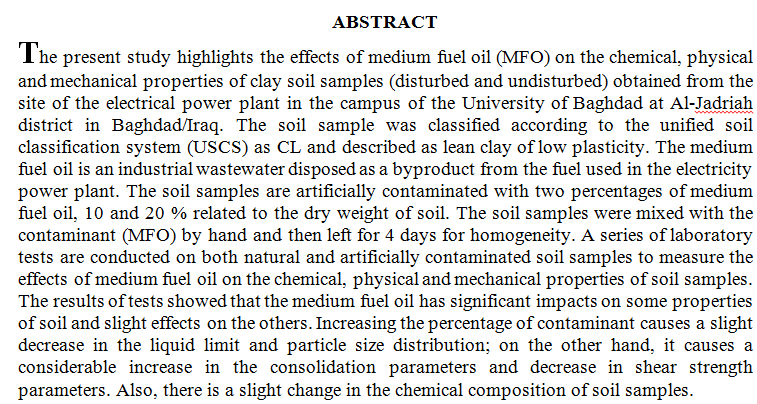
Thin films were prepared from poly Berrol way Ketrrukemaaih pole of platinum concentrations both Albaarol and salt in the electrolytic Alastontrel using positive effort of 7 volts on the pole and the electrical wiring of the membrane record
The main goal of this work is to put a simple model of the spectral energy distribution of binary stars called WW Cha. This model is built up on the extracted data from various telescopes and archives for the target WW Cha stars and then analyzing them using a python environment. The result of the fitting proposes that there are two protoplanetary disks around the WW Cha star, with different physical properties for each disk, such as the size of the inner disk being 10 AU, while the size of the outer disk being 300 AU. The shape of the outer disk is a flaring disk not a flat disk according to the value of the power law for the surface density (1.5). The emission in the disk is caused by small amorphous olivine grains rangin
... Show MoreThe current research aimed to investigate the psychometric characteristics of the Arabic version of the Nomophobia scale for the Omani youth. The scale was administered to a random sample of students from public and private universities and colleges in Oman. The research sample consisted of 2507 students, of whom 868 males and 1639 females. The validity of the measure was first checked by presenting the scale to a group of experts in this field. Then the exploratory and confirmatory factor analysis was carried out. The exploratory factor analysis revealed the existence of three main factors: the fear of connectivity loss, the fear of communication loss with others, and the fear of network outages. These factors accounted for 65.6% of the
... Show MoreThe Ratawi Oil Field (ROF) is one of Iraq's most important oil fields because of its significant economic oil reserves. The major oil reserves of ROF are in the Mishrif Formation. The main objective of this paper is to assess the petrophysical properties, lithology identification, and hydrocarbon potential of the Mishrif Formation using interpreting data from five open-hole logs of wells RT-2, RT-4, RT-5, RT-6, and RT-42. Understanding reservoir properties allows for a more accurate assessment of recoverable oil reserves. The rock type (limestone) and permeability variations help tailor oil extraction methods, extraction methods and improving recovery techniques. The petrophysical properties were calculated using Interactive Petroph
... Show MoreThis study is achieved in the local area in Eridu oil field, where the Mishrif Formation is considered the main productive reservoir. The Mishrif Formation was deposited during the Cretaceous period in the secondary sedimentary cycle (Cenomanian-Early Turonian as a part of the Wasia Group a carbonate succession and widespread throughout the Arabian Plate. There are four association facies are identified in Mishrif Formation according the microfacies analysis: FA1-Deep shelf facies association (Outer Ramp); FA2-Slope (Middle Ramp); FA3-Reef facies (Shoal) association (Inner ramp); FA4-Back Reef facies association. Sequence stratigraphic analysis show there are three stratigraphic surfaces based on the abrupt changing in depositional
... Show More (7)
(7)
 (1)
(1)
 (12)
(12)
 (12)
(12)
In present study, the technique was used, including nuclear track detector type (CR-39), for appreciative concentrations uranium and radon in soil samples from Baghdad University Campus-AL-Jadiriyah utilizing a prolonged -term with a solid-state nuclear path sensor, a technique for charged particles has been developed., the radon concentrations, effective dose rate and uranium concentrations have measured in soil samples. Eight various venues from soil Baghdad University Campus have appointed. The results indicated variant values about uranium and radon concentrations, the average value for radon gas, effective dose rate and uranium concentrations was found to be 281.59 Bq/cm3, 7.09 mSv/y and 0.01 Bq/mm-2 respectively. All results a
... Show MoreSilver selenide telluride Semiconducting (Ag2Se0.8Te0.2) thin films were by thermal evaporation at RT with thickness350 nm at annealing temperatures (300, 348, 398, and 448) °K for 1 hour on glass substrates .using X-ray diffraction, the structural characteristics were calculated as a function of annealing temperatures with no preferential orientation along any plane. Atomic force microscopy (AFM) and X-ray techniques are used to analyze the Ag2SeTe thin films' physical makeup and properties. AFM techniques were used to analyze the surface morphology of the Ag2SeTe films, and the results showed that the values for average diameter, surface roughness, and grain size mutation increased with annealing temperature (116.36-171.02) nm The transm
... Show MoreThe research involves using phenol – formaldehyde (Novolak) resin as matrix for making composite material, while glass fiber type (E) was used as reinforcing materials. The specimen of the composite material is reinforced with (60%) ratio of glass fiber.
The impregnation method is used in test sample preparation, using molding by pressure presses.
All samples were exposure to (Co60) gamma rays of an average energy (2.5)Mev. The total doses were (208, 312 and 728) KGy.
The mechanical tests (bending, bending strength, shear force, impact strength and surface indentation) were performed on un irradiated and irrad
... Show More